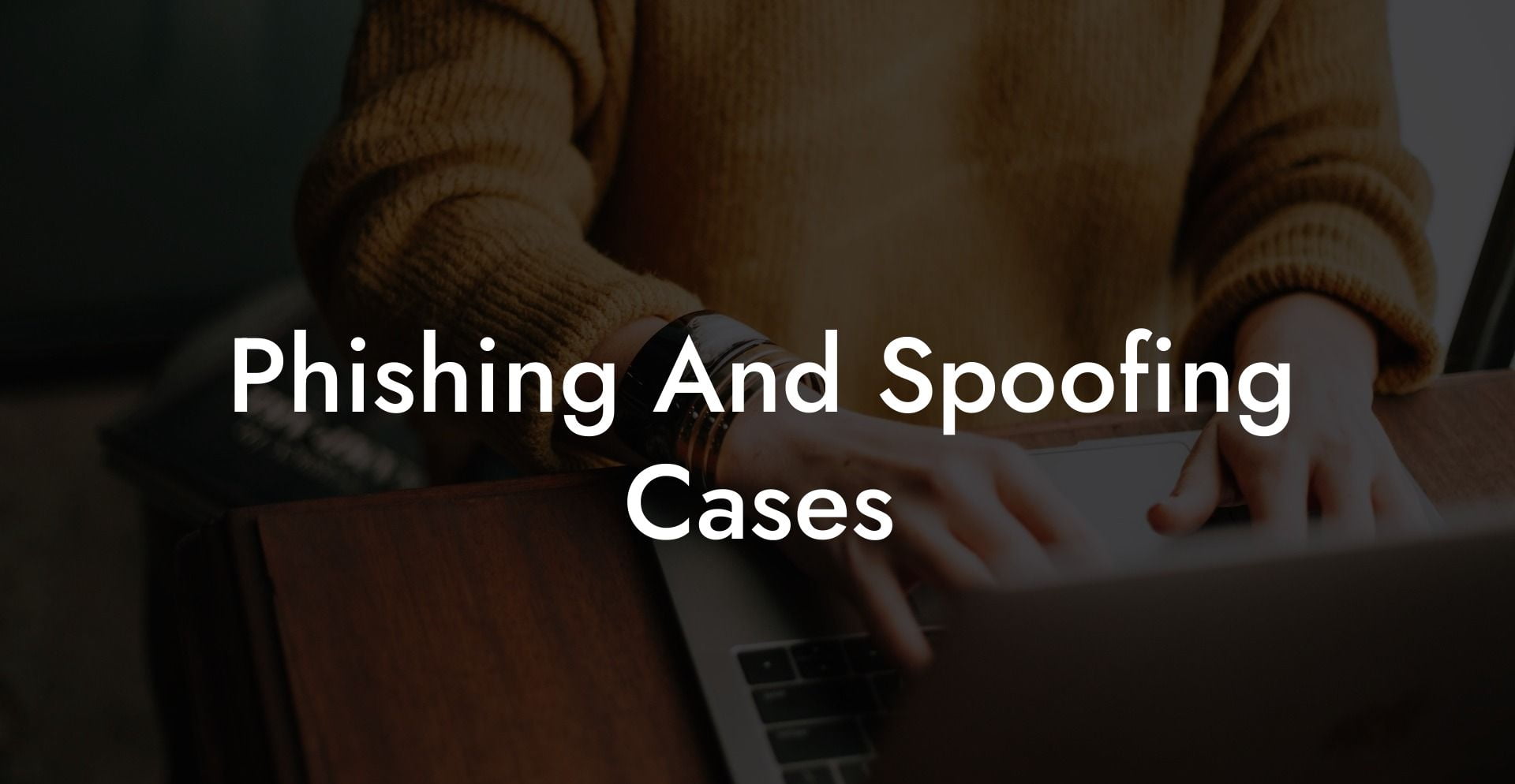From our smartphones to our inboxes, our lives are incredibly connected. With this connection, however, comes the risk of falling victim to cyber attacks, such as phishing and spoofing. As these crimes continue to make headlines, it is crucial for individuals and businesses to understand these threats and take action to protect themselves. In this article, we will explore real-life cases of phishing and spoofing attacks and identify the tools and preventative measures you can take to secure your information.
Phishing And Spoofing Cases Table of Contents
Understanding Phishing and Spoofing
Case 1: Google Docs Phishing Scam
Understanding Phishing and Spoofing
Before diving into the examples, let's take a moment to define phishing and spoofing. Phishing is a type of cyber attack where criminals impersonate a trusted entity in an attempt to trick individuals into revealing sensitive data or gain unauthorized access to their devices. This can occur through email, phone calls, or text messages.
Protect Your Data Today With a Secure Password Manager. Our Top Password Managers:
On the other hand, spoofing is the act of disguising communication so that it appears to be from a reputable source. This can be achieved by manipulating email addresses, phone numbers, or the domain names of websites. Spoofing is often used as a means to carry out phishing attacks by creating a false sense of trust in the potential victim.
Case 1: Google Docs Phishing Scam
In 2017, a sophisticated phishing scam targeted Google Docs users across the world. Cybercriminals sent emails appearing to be from a known contact or organization, and the email contained a Google Docs invitation link. Upon clicking on the link, the users were redirected to a legitimate Google sign-in page, where they were prompted to grant permissions to a malicious app posing as Google Docs. Once granted, the attackers accessed the victims' contact lists and sent the same phishing email to their contacts.
Case 2: Deepfake Audio Spoofing
In 2019, a UK-based energy firm suffered a loss of nearly $243,000 due to an advanced spoofing attack. The cybercriminal used AI-powered "deepfake" technology to mimic the voice of the company's CEO on a phone call with an employee. The employee was tricked into believing the call was genuine and transferred the large sum to a fraudulent account as instructed.
Preventing Phishing and Spoofing Attacks
Now that we understand the dangers of phishing and spoofing, let’s discuss some key steps you can take to protect yourself and your business.
1. Education:
Make sure that you and your employees are aware of the common signs of phishing and spoofing, such as inconsistencies between the sender's email address and their apparent identity, urgent requests for sensitive information, or unknown links and attachments.
2. Multi-Factor Authentication:
Implement multi-factor authentication (MFA) on all accounts and devices. This adds an extra layer of security, making it more difficult for cybercriminals to gain unauthorized access.
3. Regular Updates:
Keep all software up-to-date, as outdated software may have security vulnerabilities that can be exploited by cybercriminals in phishing and spoofing attacks.
4. Secure Communications:
Utilize encrypted communication methods such as email security gateways or secure messaging services, which can help to protect your business from spoofing and phishing attempts.
5. Incident Response Plan:
Establish a plan for handling phishing and spoofing attacks. This should include guidelines for reporting and escalation, and clear instructions for employees on how to react upon suspicion of an attack.
As we have seen through these real-life examples, phishing and spoofing attacks are a growing threat to individuals and businesses alike. By familiarizing yourself with these cases, staying informed about the latest security trends, and implementing preventative measures, you can take significant steps towards protecting yourself and your organization.
We hope this article has been a valuable resource in understanding phishing and spoofing attacks. Remember to share this post with your network to help spread awareness, and don't forget to explore our comprehensive guide on Voice Phishing for even more insights into this pressing cybersecurity issue.
Protect Your Data Today With a Secure Password Manager. Our Top Password Managers:















